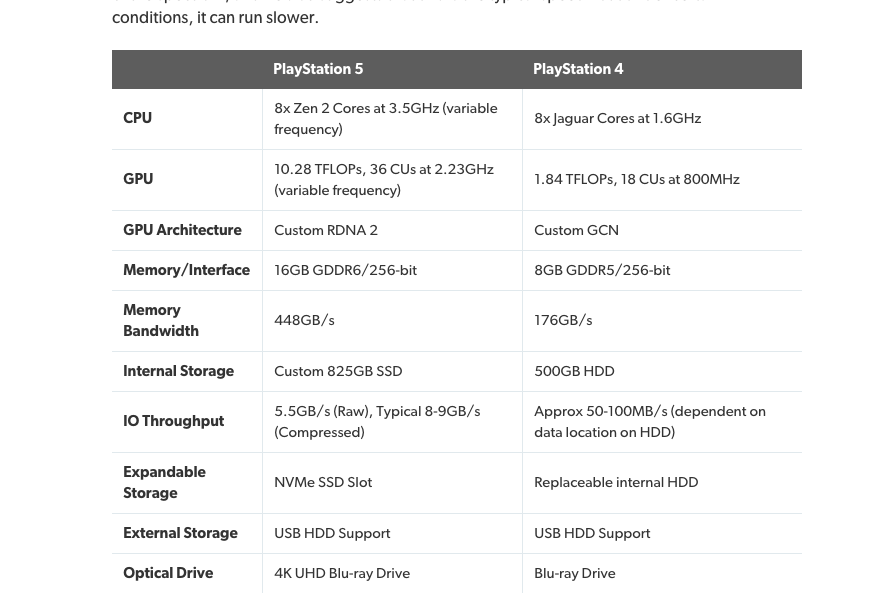Eurogamer has revealed the specs for the PS5.
On the face of it, PlayStation 5 delivers a ton of power, but there does seem to be an extra onus on developers to optimise to these new characteristics. The question is, what happens when the processor does hit its power limit and components down-clock? In his presentation, Mark Cerny freely admits that CPU and GPU won’t always be running at 3.5GHz and 2.23GHz respectively.
“When that worst case game arrives, it will run at a lower clock speed. But not too much lower, to reduce power by 10 per cent it only takes a couple of percent reduction in frequency, so I’d expect any downclocking to be pretty minor,” he explains. “All things considered, the change to a variable frequency approach will show significant gains for PlayStation gamers.”
……………………..
While Cerny doesn’t mention technologies such as machine learning support or variable rate shading, PS5 does indeed deliver hardware-accelerated ray tracing via its Intersection Engine, which Cerny says is “based on the same strategy as AMD’s upcoming PC GPUs”. There had been speculation of an external block, but that’s not the case – like next-gen Navi and Xbox Series X, the RT hardware is built into the shaders and so fully integrated. Similar to the RDNA implementation, PS5 will have access to the same kind of RT implementations we’ve seen in the PC space – reflections, ambient occlusion, shadows and global illumination are a good fit.
…………………………….
The nature of the SoC and its features is important – and so much of it is new information, and crucial information based on feedback from our audience. However, what’s clear from the presentation is that Mark Cerny has very different priorities – and there’s the small matter of the next-gen dream to consider. Two very specific components are in play here: the SSD and a remarkable piece of 3D audio hardware dubbed the Tempest engine.
Delivering two orders of magnitude improvement in performance required a lot of custom hardware to seamlessly marry the SSD to the main processor. A custom flash marries up to the SSD modules via a 12 channel interface, delivering the required 5.5GB/s of performance with a total of 825GB of storage. This may sound like a strange choice for storage size when considering that consumer SSDs offer 512GB, 1TB or more of capacity, but Sony’s solution is proprietary, 825GB is most optimal match for the 12-channel interface and there are other advantages too. In short, Sony had more freedom to adapt its design: “We can look at the available NAND flash parts and construct something with optimal price performance. Someone constructing an M.2 drive presumably does not have that freedom, it would be difficult to market and sell if it were not one of those standard sizes,” Mark Cerny says.

This is a vast improvement and we are excited for what is coming.
Read the full details here

